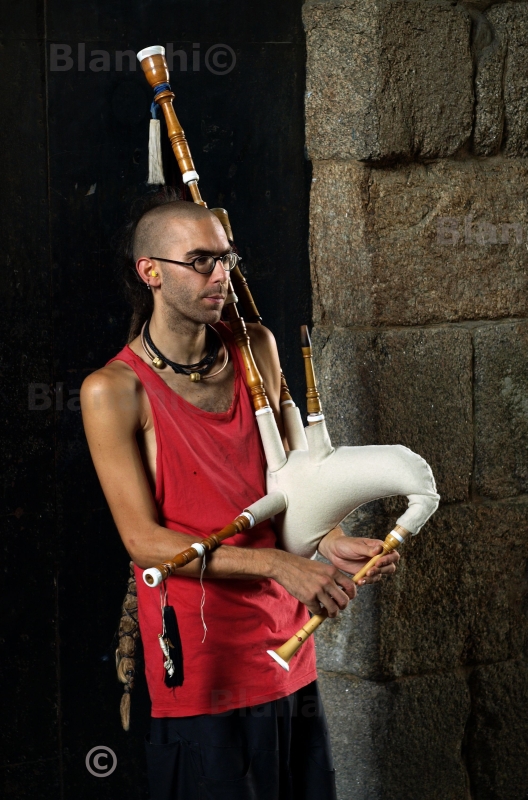Hexanon AR lenses to Four- Thirds mount Adaptation.
We can make the old Hexanon AR analogical lens suitable for the modern 4/3 frames. So this has been written to make this work easier.
You can find other instruction manual on the web but not as easier to understand as this one.
It just takes a few minutes to do it and the lens are still useful to keep on using them with the Konica cameras in the preselection manual mode to the aperture.
Following the same process but in reverse, we can return the lens to its original state.
We have taken as an example an Hexanon AR 28mm f/3,5, type three (rubber focusing ring and diaphragm scale of complete step and f/22).
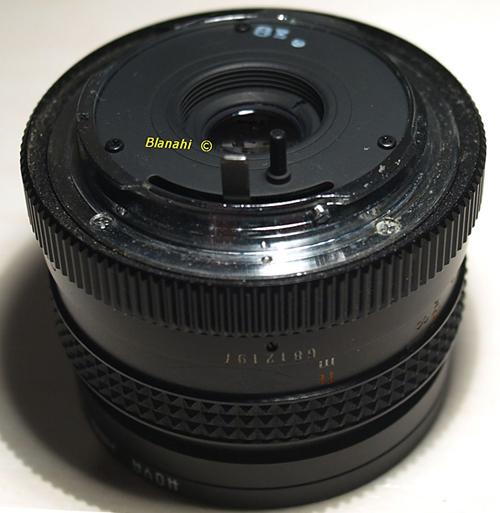
At the top we can see the shield with the cylindrical rod that shows in the Konica cameras the minimum value of diaphragm of the used lens, and closer, we can see also the rectangular cam that activate the diaphragm when the automatic mode is selected (AE).
These are the components to be taken in pieces in the first step.
Warning: It is very easy to find lens that have the screws stuck, as well as adhesive places inside the shield or under the bayonet. Therefore, we must use a screwdriver in good conditions with its points, they must be made of good quality and apply strength to remove the screws.
First step: Take off the shield removing the three screws that hold it.
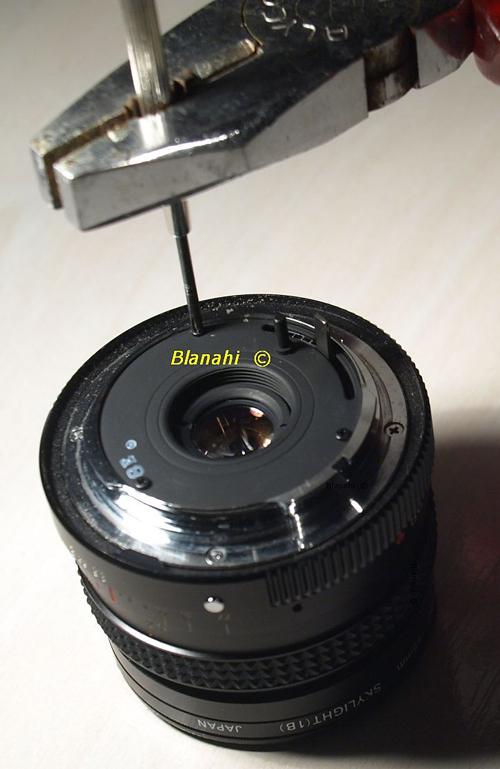
Once the screws have been removed, we remove the black piece
(Remember that they can have some adhesive places, so we have to pull with strength).
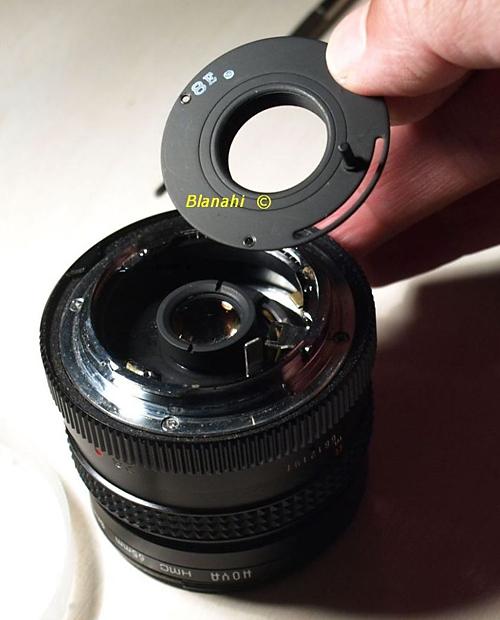
Next we focus the lens to the minimum distance, so that the lens sinks into the cylinder and enabling us to see the screws that fasten the “T” of the cam that activates the diaphragm in the automatic mode.
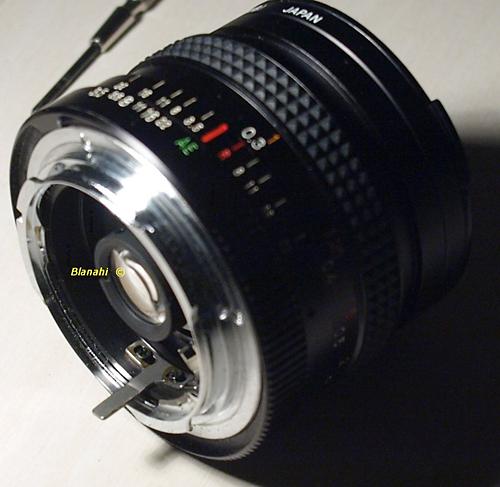
As you can see, these screws have glue too. It must be eliminated as much as possible before trying to remove the screws.
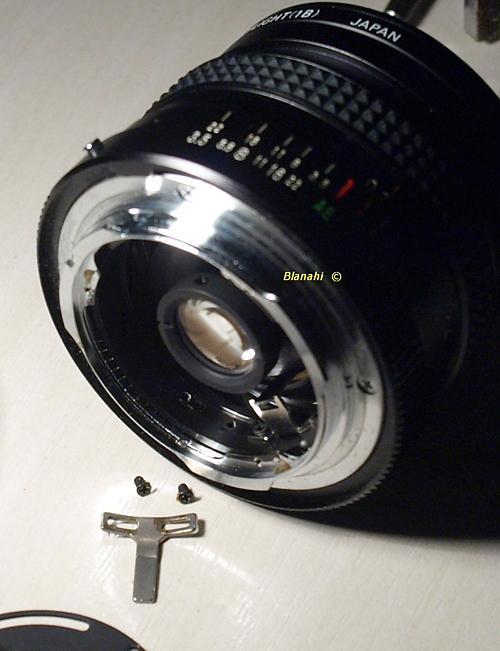
We can see remains of glue on the heads of the screws, in the “T” and in the hollow of the lens. We keep the material we have taken apart except the three screws that we removed at the beginning, that will be useful to fix the limiter shield (baffle) for 4/3 .
At this point we should vacuum the lens to extract remains of glue or small pieces of paint that could have fallen inside, and clean the exterior lens. Then we will install the appropriate shield to the focal and hold it with the three screws that we removed at the beginning, as you can appreciate in the following picture.

Next step, we will mark with an indelible felt tip pen the little bubble that the bayonet has. It is the reference that well face to the red point of the mount in the camera to couple the lens.
Finally we must eliminate the difference in height of the bayonets between one system and other. The simplest procedure is installing the rubber band joint that can be seen in the picture above. The diameter is one inch and a quarter, and one millimetre and a half thick for light lens and ring movement with soft diaphragm, and two millimetres for teles, zoom lens or ring movement with tough diaphragm. You can find them in ironmonger´s or hydraulics or mechanical shops.
This system fixes the lens rigid enough to the bayonet as to be used without problems (especially with rubber bands of 2 millimetres thickness) There´s no need to set the needle for closure (in the professional world this is usually removed to change the lens faster).
At this moment the lens can be coupled to the camera and test it.
--------------------------------------------------------------------------
Adjustment to infinite:
(Register: distance between the surface of coupling the bayonet of the lens and the surface to register the image of the film … or the surface of the sensor).
The rubber band thickness is not enough to compensate for the differences of the measurement of register of the system 4/3 to the Konica cameras (that is a little bit bigger in the Konica system), that´s why the lens will focus the infinity … and it will go further.
Even though photographs can be taken without correcting this difference, It is advisable to do it, as the optical group is made and corrected to give an optimum image in the distance of the focal shot, for what it was designed (to its correct distance of register). In lens with a complex optic, there can appear some small defects of chromatic aberration of diffraction when we force to form the focused image at a closer distance, so it is advisable to correct this remaining route of the focusing ring.
In the adaptation we haven´t removed the bayonet of the lens, but doing it and supplementing with tiny washers under the screws that hold the main body is the easiest way to correct that difference of registry, as we are moving the group of lenses together, and moving it away from the sensor to get the exact distance that it was designed for. Watchmakers have calibrated washers with small thickness that we can use.
----------------------------------------------------------------------------
Unfortunately...
Not all the Hexanon lens admit this reversible and multifunctional conversion (removing the rubber band we can use the lens in the analogical Konica AR camera immediately).
Some zoom lenses require the cut of the cam of the mechanism of the automatic diaphragm, as they are joined to its ring, even though, this could be used as the others in pre selection mode.
That´s all, simple and fast: I hope this to be useful and you enjoy these great old lenses.
This is one small exemple. Hit the image for largue view.(Not the original quality, but good to evaliate lens performance) :
Konica Hexanon AR 57mm 1.2 @ 1.2 shot . Olympus E 510 camera.
All Images and Materials Copyright Protected.
All images and materials are copyright protected and are the property of author. Please contact for permissions.
© Unauthorized use and/or duplication, transmission or manipulation of these images and materials without express and written permission from this page author is strictly prohibited. Excerpts and links may be used, provided that full and clear credit is given to Blanahi/Avaldia as author, with appropriate and specific direction to the original content.
